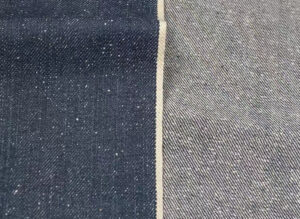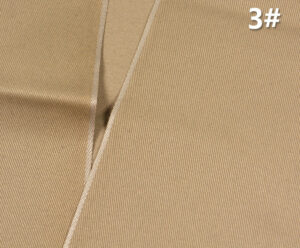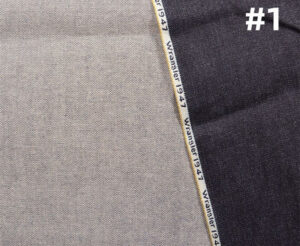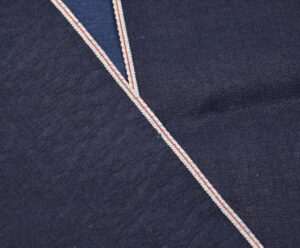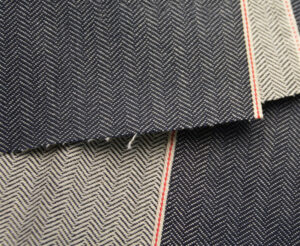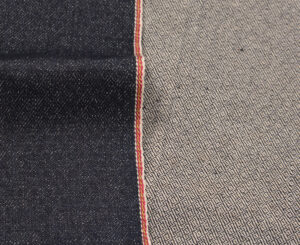What are the different types of twills?
Twill is a versatile weaving pattern known for its diagonal ribs, durability, and distinctive texture. Depending on the direction, complexity, and arrangement of the weave, twills can be classified into several types. Below are the main categories:
1. Based on Direction
a) Right-Hand Twill (RHT)
- Diagonal lines run upward to the right (↗).
- Most common in denim (e.g., Levi’s, Wrangler).
- Smooth feel and widely used in modern fabrics like denim fabric
A right hand twill selvedge denim fabric
b) Left-Hand Twill (LHT)
- Diagonal lines run upward to the left (↖).
- Often used in vintage and workwear (e.g., classic Lee jeans).
- Slightly softer initial hand feel compared to RHT.
Selvedge Denim Material from WingFly:
c) Broken Twill
- The diagonal direction reverses at intervals, creating a zigzag effect.
- Used in some denim (e.g., Wrangler’s cowboy jeans) to reduce leg twisting.
2. Based on Structure
a) Regular (Balanced) Twill
- Follows a consistent pattern (e.g., 2/1, 3/1 twill).
- Example: 2/1 twill (two warp threads over one weft thread).
b) Reverse Twill
- The weave is inverted, making the back side more prominent.
- Often used for reversible fabrics or specific textures.
c) Herringbone Twill
- The diagonal direction reverses periodically, creating a V-shaped or chevron pattern.
- Common in wool suits, tweed, and upholstery.
d) Diamond Twill
- Forms a diamond-shaped pattern by combining vertical and horizontal twills.
- Used in traditional wool fabrics and some decorative textiles.
e) Elongated Twill
- The diagonal lines are stretched, creating a steep or flattened appearance.
- Used for unique visual effects in suiting and drapery fabrics.
3. Based on Thread Count
a) Even-Sided Twill (e.g., 2/2 twill)
- Equal warp and weft exposure (e.g., two over, two under).
- Balanced and durable, used in gabardine and some denim.
b) Warp-Faced Twill (e.g., 3/1 twill)
- Warp threads dominate the surface (e.g., three over, one under).
- Common in denim and sturdy workwear fabrics.
c) Weft-Faced Twill (e.g., 1/3 twill)
- Weft threads dominate the surface (e.g., one over, three under).
- Softer and sometimes used in flannel or upholstery.
4. Specialty Twills
a) Cavalry Twill
- Heavy, steep-twill fabric with double lines, originally for military uniforms.
- Used in coats and high-end trousers.
b) Serge Twill
- A classic 2/2 twill, often in wool or polyester blends for suits.
c) Denim Twill
- Typically 3/1 warp-faced twill, giving jeans their rugged texture.
d) Houndstooth Twill
- A broken check pattern created with a modified twill weave.
- Popular in wool suits and tweed jackets.
Conclusion
Twill weaves vary widely in direction, structure, and application. While right-hand and left-hand twills are the most basic distinctions, other types like herringbone, broken twill, and houndstooth offer unique aesthetics and functionality. The choice depends on fabric durability, texture, and intended use—whether for denim, suiting, or decorative textiles.

